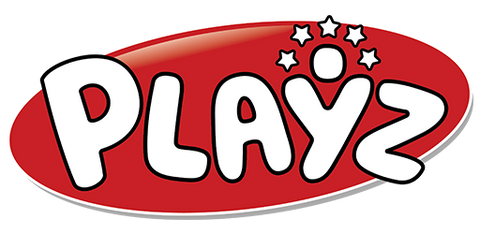
The Best Imaginative Play Toys for Sparking Lifelong Creativity
What are the best toys for imaginative play? The answer is simpler than you think: they’re the ones that are 90% child and 10% toy. Classic wooden blocks, versatile magnetic tiles, and a simple box of dress-up clothes don’t do much on their own—and that’s their superpower. They invite children to take the lead, transforming simple objects into anything their minds can conjure.
These open-ended tools are the true powerhouses of the playroom. They don't just entertain; they build a foundation for creativity, critical thinking, and problem-solving skills that will last a lifetime.
Why Imaginative Play Is a Developmental Superpower
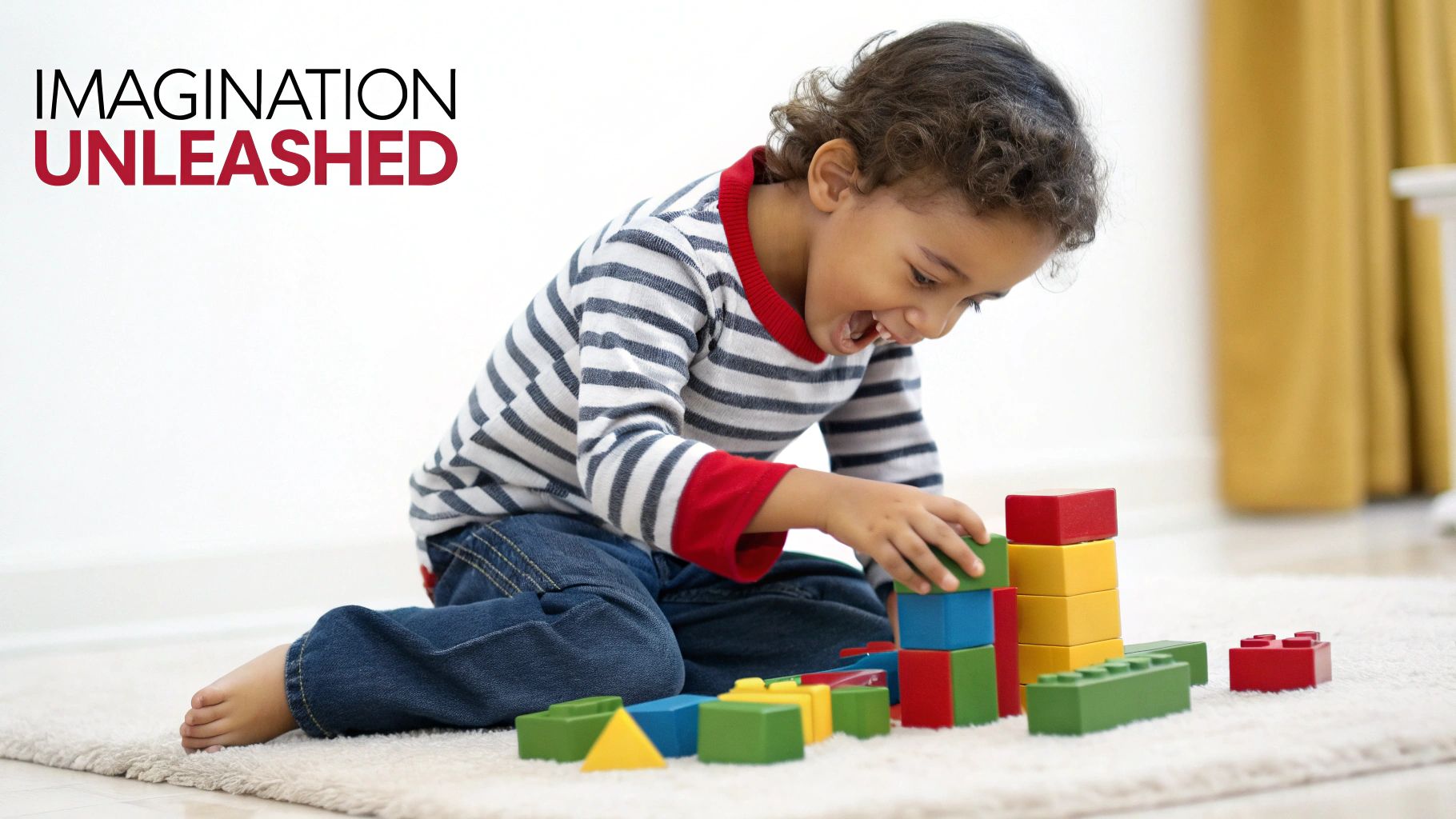
When a child turns a cardboard box into a spaceship or a pile of blankets into a secret fort, they are engaged in the essential work of childhood: imaginative play. This isn't just about passing the time. It's a mental playground where they can safely try on different roles, navigate complex emotions, and solve make-believe challenges.
Think of it as a rehearsal for real life. By pretending to be a chef, an astronaut, or a doctor, a child develops real-world skills in a low-stakes environment, firing up their mind for all the learning yet to come.
Key Skills Nurtured Through Pretend Play
Imaginative play is a fun-filled workout for the brain, directly wiring a child for essential life skills. Children who regularly engage in creative, self-directed play often demonstrate stronger abilities in several key areas.
- Creative Problem-Solving: The scenario: A princess is trapped in a pillow tower. The challenge: How does the brave knight rescue her? With no instruction manual, kids must invent solutions, test ideas, and learn to think on their feet. This builds mental flexibility and confidence.
- Social and Emotional Intelligence: Playing "house" or "school" is a practice run for social interaction. It teaches kids empathy by letting them step into someone else’s shoes. They learn to negotiate roles ("Okay, you be the baby this time!"), communicate ideas, and resolve disagreements.
- Language and Communication: Pretend play is a conversation engine. Children invent dialogue for their dolls, narrate epic adventures for their action figures, and expand their vocabulary to describe the incredible worlds they’ve built.
This hands-on approach is the core of discovery-based learning, a method where children learn by doing and exploring their own questions. It empowers them to experiment and find answers independently.
Consider this guide your roadmap. We'll explore how to identify the best imaginative play toys that genuinely ignite creativity and build these crucial skills. We’ll focus on timeless, versatile tools that offer endless play value, helping you make confident choices for your child.
What Makes an Imaginative Toy Great? Unpacking the Essentials
In a toy aisle filled with flashing lights and electronic sounds, it's easy to get distracted. But the secret to a toy that will be cherished for years isn't its complexity—it's its simplicity.
The magic lies in a single principle: the best toys are open-ended canvases for a child’s mind. They should be 90% child and 10% toy, meaning the child's imagination does the heavy lifting.
Take a classic set of wooden blocks. They are a creative multi-tool. Today, they form a towering castle. Tomorrow, they become a sprawling city for toy cars or a futuristic spaceship hangar. The blocks themselves don't dictate the story; they invite infinite possibilities.
The Core Qualities of a Playtime Powerhouse
To find toys that genuinely spark creativity, you need to look beyond the packaging and focus on a few key qualities. These traits separate a long-term playroom staple from a five-minute wonder.
We can break down what makes a high-quality imaginative toy into a few core features. The table below outlines what to look for and, more importantly, why it matters for your child's development.
Key Features of High-Quality Imaginative Play Toys
| Feature | Why It Matters for Imaginative Play | Real-World Examples |
|---|---|---|
| Open-Ended & Versatile | The toy has no single "right" way to be used, encouraging kids to invent their own scenarios and stories. | Building blocks, art supplies, plain dolls or figures, play silks. |
| Child-Driven | The toy is passive, requiring the child to be the active director of the play. This builds creativity and confidence. | A simple toy kitchen, a set of animal figurines, dress-up clothes. |
| Durable & Long-Lasting | It can withstand years of enthusiastic play—being dropped, stacked, and repurposed—without breaking. | Solid wood toys, high-quality BPA-free plastics, sturdy fabrics. |
| Safe & Non-Toxic | It's made from materials free from harmful chemicals, with no small parts or sharp edges for younger children. | Toys made from natural wood, food-grade silicone, or certified non-toxic paints. |
By keeping these features in mind, you're not just buying another toy; you're investing in a tool that will support and grow with your child's imagination for years.
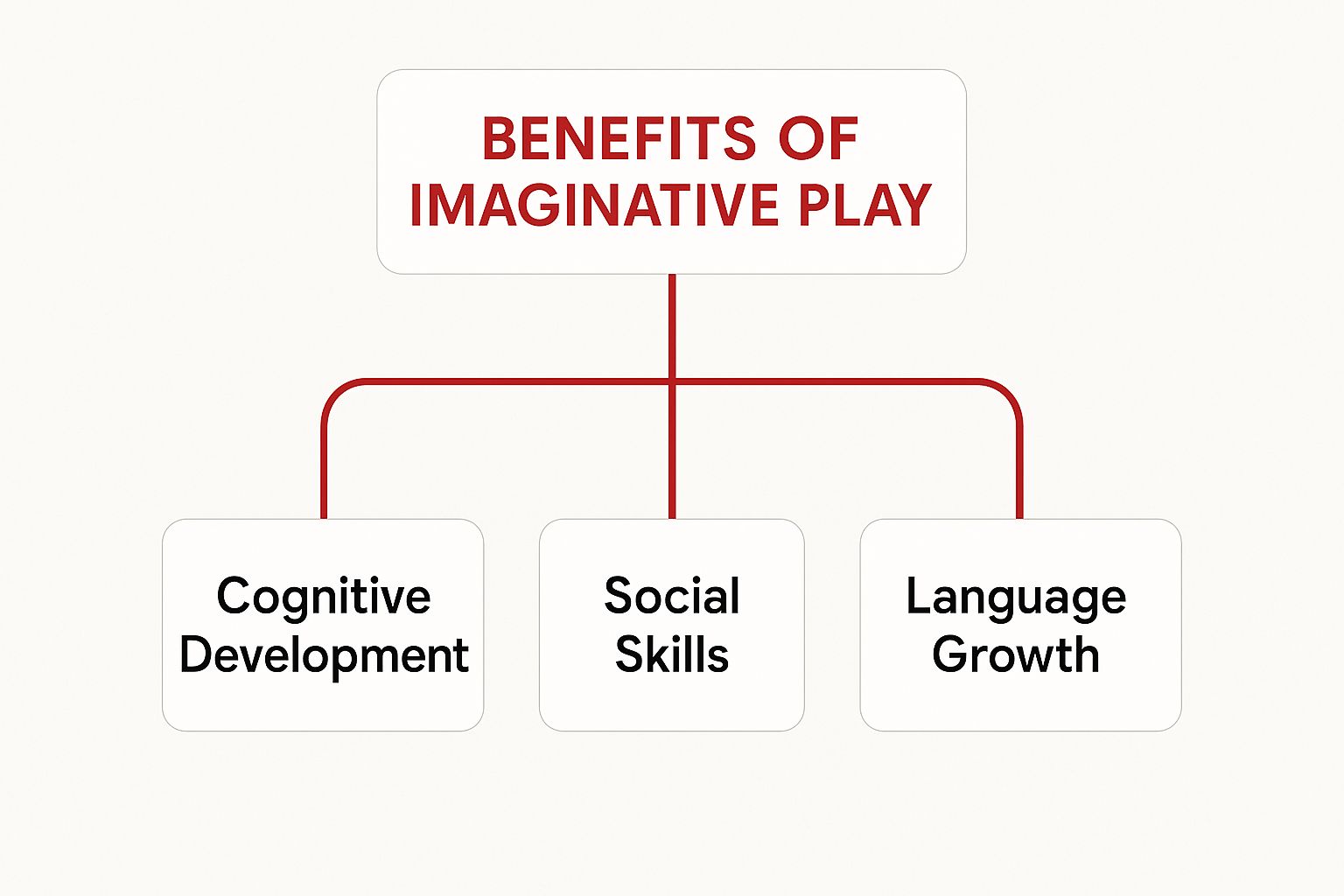
Investing in Open-Ended Potential
Ultimately, the goal is to give kids toys that demand active participation, not passive observation. This "simple is better" philosophy is a major driver in the toy industry. The global toy market, valued at around USD 121.3 billion in 2025, is projected to climb to USD 217.2 billion by 2035, partly because parents are actively seeking products that fuel authentic creativity.
A truly great imaginative play toy acts as a prop, not a script. It gives a child the tools to build their own stories, solve their own problems, and explore worlds that exist only in their mind.
This approach is vital for building a child’s ability to think independently. When you provide the right kinds of open-ended tools, you empower them to tackle challenges and invent solutions on their own terms. To learn more, check out our guide on how to develop problem-solving skills in children.
Choosing toys that are simple, versatile, and child-driven is a direct investment in their long-term cognitive and emotional development.
Choosing the Best Imaginative Play Toys for Every Age and Stage
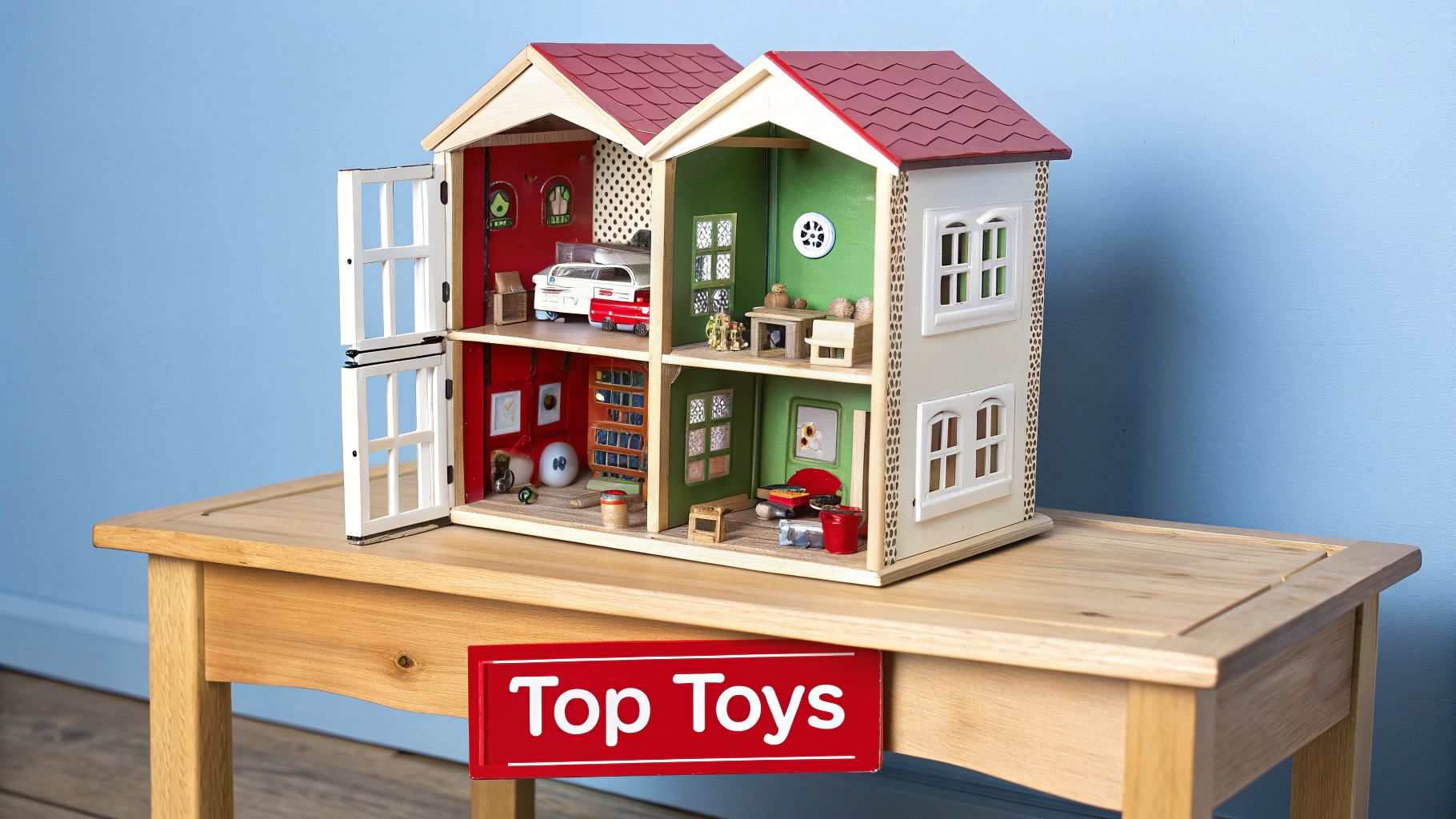
Knowing why a toy is great is one thing, but matching it to a child's developmental stage is where the magic truly happens. A toy that sparks incredible stories for a five-year-old might overwhelm a toddler.
Think of it like choosing a bicycle. If it’s too big, they can’t reach the pedals. If it’s too small, it holds them back. The best imaginative play toys meet kids right where they are, offering just enough challenge to fuel their growing minds without causing frustration.
Let’s break down the key stages and the types of toys that support them best.
Toddlers (Ages 1–3): The Age of Imitation
For toddlers, the world is a giant hands-on experiment. Their play is all about imitation and cause-and-effect. They see you cooking, talking on the phone, or cleaning, and they want to do it too. This mirroring of real life is the foundation of imaginative play.
At this stage, their focus is on the simple joy of stacking, pouring, and discovering the physical properties of objects.
Top Toy Types for Toddlers:
- Simple Life-Skill Props: Chunky play food, a toy phone, or a child-sized broom lets them act out the everyday scenes they observe.
- Sensory and Motor Skill Toys: Large, easy-to-grip blocks, soft dolls, and ride-on toys engage their senses while building crucial gross motor skills.
- "Posting" and Sorting Toys: Toddlers are fascinated by putting things into other things. A box with slots for dropping blocks inside can captivate them while building fine motor skills and hand-eye coordination.
Preschoolers (Ages 3–5): The Golden Age of Make-Believe
Welcome to the explosion of creativity! Preschoolers move beyond simply copying actions and start inventing their own amazing worlds. Their play becomes more social and story-driven as they learn to negotiate roles, bounce ideas off friends, and build entire narratives from scratch.
This is where open-ended toys truly shine, as a single block can become a phone one minute and a spaceship the next.
A huge cognitive leap happens here: kids shift from mimicking actions to inventing original scenarios. They’re no longer just stirring a pot; they’re a world-famous chef creating a magical potion for a grumpy, three-headed dragon.
To support this creative boom, look for toys that encourage role-playing and world-building. For more ideas, our guide to the best learning toys for preschoolers is a perfect resource.
Top Toy Types for Preschoolers:
- Dress-Up Collections: You don’t need elaborate costumes. A few key items—a cape, a fun hat, a doctor's coat—can unlock dozens of characters and adventures.
- Small World Play Sets: Animal figurines, dollhouses, and toy cars provide the props needed to build and populate miniature universes.
- Creative Construction Toys: Magnetic tiles and interlocking blocks allow for more complex structures that can become castles, rocket ships, or secret forts for their epic stories.
Early School-Aged Children (Ages 6–8): The Strategic Storytellers
As kids enter elementary school, their imaginative play becomes more strategic and complex. They start weaving rules, detailed plots, and problem-solving challenges into their games. Their play might involve setting up a store with prices and making change, or designing a vehicle that must complete a specific mission.
This is the perfect time to introduce toys that blend creativity with logic and strategy.
Top Toy Types for Early School-Aged Kids:
- Advanced Building Sets: LEGOs, K'NEX, and other construction kits are perfect for creating detailed, functional models that bring their ambitious ideas to life.
- STEM and Science Kits: Simple chemistry sets, circuit builders, or basic engineering kits provide a framework for inventive play that is also educational.
- Storytelling Tools: Puppet theaters, a well-stocked art station, or a simple stop-motion animation app can help them express their increasingly sophisticated narratives.
Top Picks: The Best Imaginative Play Toys in Action
Now, let's explore some of the best imaginative play toys that put these principles into practice. Think of this not as a definitive "best of" list, but as a tour through the different worlds your child can create. Each category represents a launchpad for adventure, waiting for a child's vision to bring it to life.
For the World Builders
World-building toys empower kids to construct entire environments from the ground up. This type of play develops spatial reasoning, planning skills, and the satisfaction of bringing a big idea to life.
- Magnetic Tiles: A modern classic for a reason, magnetic tiles are incredibly intuitive. Kids can snap together towers, castles, or animal enclosures with a satisfying click. They’re fantastic for exploring geometry, symmetry, and basic physics as kids learn what makes their structures stand—and what makes them fall.
- Classic Wooden Blocks: Never underestimate the power of a simple set of blocks. They are the original world-building toy, perfect for creating massive cities, winding roadways, or a cozy house. Their weight and texture provide valuable sensory input, and their versatility is unmatched.
For Role-Playing Adventures
Role-playing is how children process and make sense of their world. By stepping into someone else's shoes, they practice empathy, communication, and social skills in a safe environment.
- Play Kitchens: A miniature kitchen is a stage for endless domestic adventures. One day your child is a world-renowned chef; the next, they're a parent making breakfast or a scientist mixing magical potions. It’s a rich environment for learning about sequences, new vocabulary, and cooperation.
- Doctor Kits: This timeless toy demystifies a potentially scary experience by putting the child in a position of power and care. They can tend to stuffed animals, family members, or dolls, practicing nurturing behaviors and learning about the body in a playful way.
For Creative Expression
Sometimes, the best tools for imaginative play aren't "toys" in the traditional sense. They are tools that allow children to make the stories in their heads tangible.
- A Well-Stocked Art Cart: Crayons, markers, paint, glue, and a stack of recycled cardboard are a recipe for creative freedom. An art station gives kids the liberty to draw characters from their stories, build props for their games, or simply express big feelings through color and shape.
- Puppet Theaters: Puppets offer a wonderful way for children to tell stories and explore different personalities, all from the safety of a character. Whether it's a simple sock puppet or a store-bought one, they are fantastic for developing narrative skills and building public speaking confidence.
These toys are more than just items to pass the time; they are foundational tools for learning. By encouraging creative thinking, they help build essential life skills like problem-solving and emotional regulation.
Parents are increasingly recognizing this value. The educational toys market, valued at USD 66.22 billion in 2024, is projected to hit USD 126.02 billion by 2032. This trend reflects a growing understanding of how play directly boosts cognitive and motor skills. You can read the full analysis on the educational toys market to see how this is shaping the industry.
Navigating Technology in Creative Play
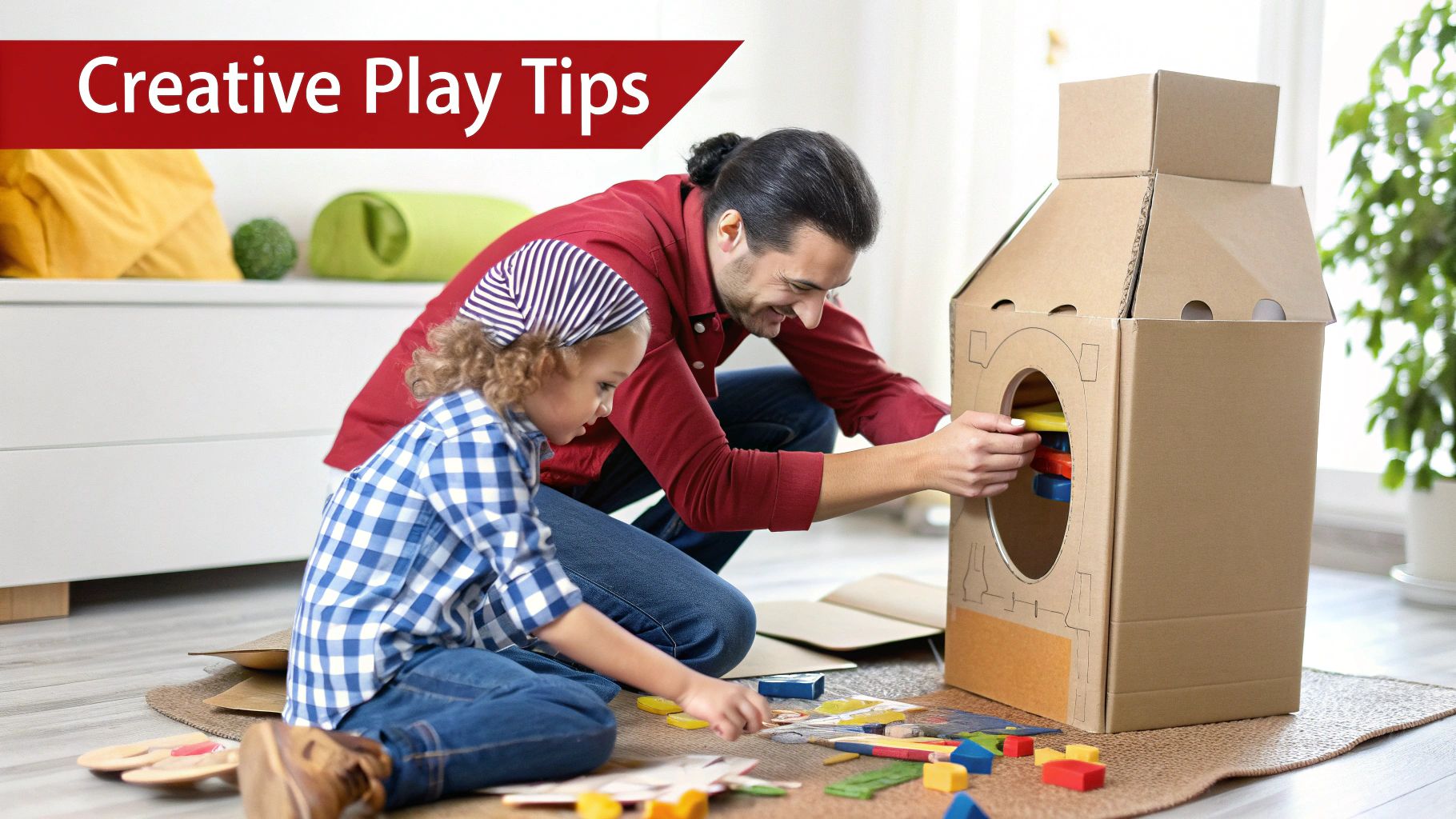
In a world filled with screens, every parent faces a critical question: where does technology fit into creative play? While it's tempting to view tech as the enemy of imagination, the key is to use it with purpose.
Think of technology as another tool in the playroom. Some digital apps can be incredible springboards for creativity—a virtual city-building game can perfectly complement the hands-on fun of real-world blocks. However, not all tech is created equal. The problem arises from tech toys that do all the work, leaving no room for a child's own ideas. When a gadget dictates the story with specific sounds and commands, it turns an active creator into a passive consumer.
Finding a Healthy Tech-Life Balance
The goal isn't to banish screens but to approach them with a critical eye. A well-designed tech toy should function like the best open-ended toys we’ve discussed: it should be a blank canvas, not a pre-filled coloring book.
Before introducing a new gadget, ask yourself one simple question: Does this toy amplify my child's imagination, or does it replace it?
The best tech-infused toys supplement classic, open-ended play, not supplant it. They should invite a child to create and interact, not just sit back and consume.
The rise of AI-powered educational toys exemplifies this delicate balance. The most innovative of these toys adapt to a child’s skill level, offering challenges that grow with them. This thoughtful integration is a key reason why the K-12 educational toy market, valued at USD 71.38 billion in 2024, is projected to reach USD 173.70 billion by 2034. You can see more on this trend in this K-12 instructive toy market report.
Smart Strategies for Screen Time
When managed thoughtfully, technology can open up incredible new worlds. The real challenge is setting clear boundaries to ensure digital fun doesn't crowd out essential hands-on play. Here are a few actionable tips:
- Prioritize Open-Ended Apps: Look for games centered on building, creating, or solving problems without a single "right" answer. Think digital LEGOs, not multiple-choice quizzes.
- Co-Play Whenever Possible: Engage with your child during screen time. Ask about what they're building or what story they're telling. This connects their digital world back to real-world creativity and conversation.
- Set Clear and Consistent Limits: Predictable rules are your best friend. For practical ideas on creating a healthy media diet, check out our guide on how to limit screen time.
By making conscious choices, you can ensure technology serves as a valuable tool that supports, rather than stifles, your child's amazing creative journey.
Frequently Asked Questions About Imaginative Play Toys
Choosing the right toys can feel like a major responsibility. We all want to give our kids the best tools for learning and fun, but it doesn't have to be complicated.
Here, we answer some of the most common questions parents have about fostering creativity at home.
How many toys does my child actually need?
It’s easy to think that more toys lead to more play, but often, the opposite is true. Research suggests that too many toys can overwhelm a child, making it difficult for them to engage deeply with any single one. A cluttered playroom can lead to scattered attention.
When a child has fewer, more versatile options, their creativity is called upon to fill in the gaps.
- Actionable Tip: Try a Toy Rotation. Keep a small selection of toys available and store the rest. Every few weeks, swap them out. Old toys will feel new again, encouraging deeper and more focused play.
- Focus on Versatility: Opt for toys that can be used in dozens of ways. A simple set of blocks offers far more long-term creative potential than a single-function electronic toy.
Are branded character toys bad for imagination?
This is a common concern. While truly open-ended toys are often the gold standard, branded character toys aren't inherently "bad." They can act as a gateway to storytelling, giving kids a familiar starting point for their adventures.
The key is balance. If a child’s play only involves reenacting scenes from a show, their creative muscles aren't getting a full workout.
- Actionable Tip: Mix and Match. Encourage them to take their favorite characters on new, original adventures. Combine character figures with a set of plain blocks or art supplies and see what new stories emerge.
The goal isn't to ban specific toys, but to ensure a child's "play diet" is balanced. The best imaginative play toys are those that invite a child to write the script, not just follow one.
What if my child isn't interested in pretend play?
First, don't panic. Every child develops at their own pace, and some are simply more observational by nature. If you want to gently encourage imaginative play, the best approach is to lead by example—without taking over.
- Actionable Tip: Create "Invitations to Play." Set up simple, intriguing scenes. For example, place a few animal figures next to some blue play silks to represent a river. Don't direct the play; just create the starting point and see what happens.
Most importantly, join in! Sit on the floor and start your own quiet game. Your calm engagement can be a powerful and gentle nudge, demonstrating how much fun it is to create worlds from scratch. For more answers, you can always explore our comprehensive FAQ page.
At Playz, we believe that the best learning happens through play. Our science kits, play tents, and creative toys are designed to spark curiosity and build essential skills, one adventure at a time. Discover the perfect tools to fuel your child's imagination and join over 5 million happy customers.
